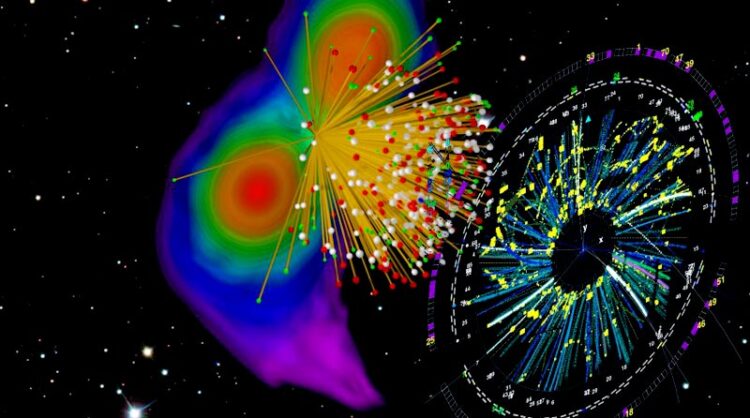Throughout the Universe, neutron stars are born in supernova explosions that mark the end of the life of massive stars. Sometimes neutron stars are bound in binary systems and will eventually collide with each other. These high-energy, astrophysical phenomena feature such extreme conditions that they produce most of the heavy elements, such as silver and gold. Consequently, neutron stars and their collisions are unique laboratories to study the properties of matter at densities far beyond the densities inside atomic nuclei. Heavy-ion collision experiments conducted with particle accelerators are a complementary way to produce and probe matter at high densities and under extreme conditions.
“Combining knowledge from nuclear theory, nuclear experiment, and astrophysical observations is essential to shedding light on the properties of neutron-rich matter over the entire density range probed in neutron stars,” said Sabrina Huth, Institute for Nuclear Physics at Technical University Darmstadt, who is one of the lead authors of the publication. Peter T. H. Pang, another lead author from the Institute for Gravitational and Subatomic Physics (GRASP), Utrecht University, added, “We find that constraints from collisions of gold ions with particle accelerators show a remarkable consistency with astrophysical observations even though they are obtained with completely different methods.”
Recent progress in multi-messenger astronomy allowed the international research team, involving researchers from Germany, the Netherlands, the US, and Sweden to gain new insights to the fundamental interactions at play in nuclear matter. In an interdisciplinary effort, the researchers included information obtained in heavy-ion collisions into a framework combining astronomical observations of electromagnetic signals, measurements of gravitational waves, and high-performance astrophysics computations with theoretical nuclear physics calculations. Their systematic study combines all these individual disciplines for the first time, pointing to a higher pressure at intermediate densities in neutron stars.
The authors incorporated the information from gold-ion collision experiments performed at GSI Helmholtzzentrum für Schwerionenforschung in Darmstadt as well as at Brookhaven National Laboratory and Lawrence Berkeley National Laboratory in the USA in their multi-step procedure that analyses constraints from nuclear theory and astrophysical observations, including neutron star mass measurements through radio observations, information from the Neutron Star Interior Composition Explorer (NICER) mission on the International Space Station (ISS), and multi-messenger observations of binary neutron star mergers.
Including data of heavy-ion collisions in the analyses has enabled additional constraints in the density region where nuclear theory and astrophysical observations are less sensitive. This has helped to provide a more complete understanding of dense matter. In the future, improved constraints from heavy-ion collisions can play an important role to bridge nuclear theory and astrophysical observations by providing complementary information. Especially experiments that probe higher densities while reducing the experimental uncertainties have great potential to provide new constraints for neutron star properties. New information on either side can easily be included in the framework to further improve the understanding of dense matter in the coming years.
The publication
Sabrina Huth, Peter T. H. Pang, Ingo Tews, Tim Dietrich, Arnaud Le Fèvre, Achim Schwenk, Wolfgang Trautmann, Kshitij Agarwal, Mattia Bulla, Michael W. Coughlin, Chris Van Den Broeck: „Constraining Neutron-Star Matter with Microscopic and Macroscopic Collisions“
About TU Darmstadt
TU Darmstadt is one of Germany’s leading technical universities and a synonym for excellent, relevant research. We are crucially shaping global transformations – from the energy transition via Industry 4.0 to artificial intelligence – with outstanding insights and forward-looking study opportunities. TU Darmstadt pools its cutting-edge research in three fields: Energy and Environment, Information and Intelligence, Matter and Materials. Our problem-based interdisciplinarity as well as our productive interaction with society, business and politics generate progress towards sustainable development worldwide. Since we were founded in 1877, we have been one of Germany’s most international universities; as a European technical university, we are developing a trans-European campus in the network, Unite! With our partners in the alliance of Rhine-Main universities – Goethe University Frankfurt and Johannes Gutenberg University Mainz – we further the development of the metropolitan region Frankfurt-Rhine-Main as a globally attractive science location.
Journal: Nature
DOI: 10.1038/s41586-022-04750-w
Method of Research: Experimental study
Subject of Research: Not applicable
Article Title: Constraining Neutron-Star Matter with Microscopic and Macroscopic Collisions
Article Publication Date: 8-Jun-2022






